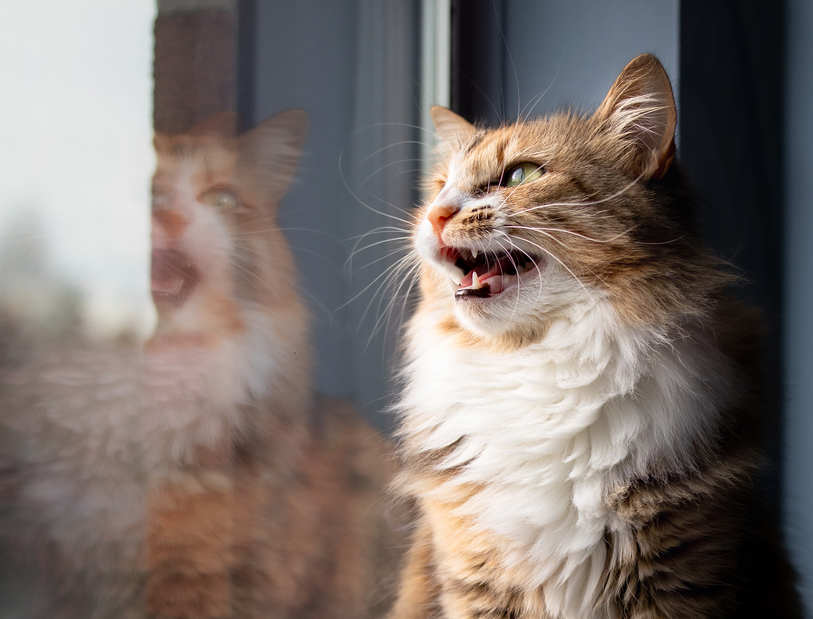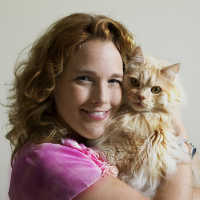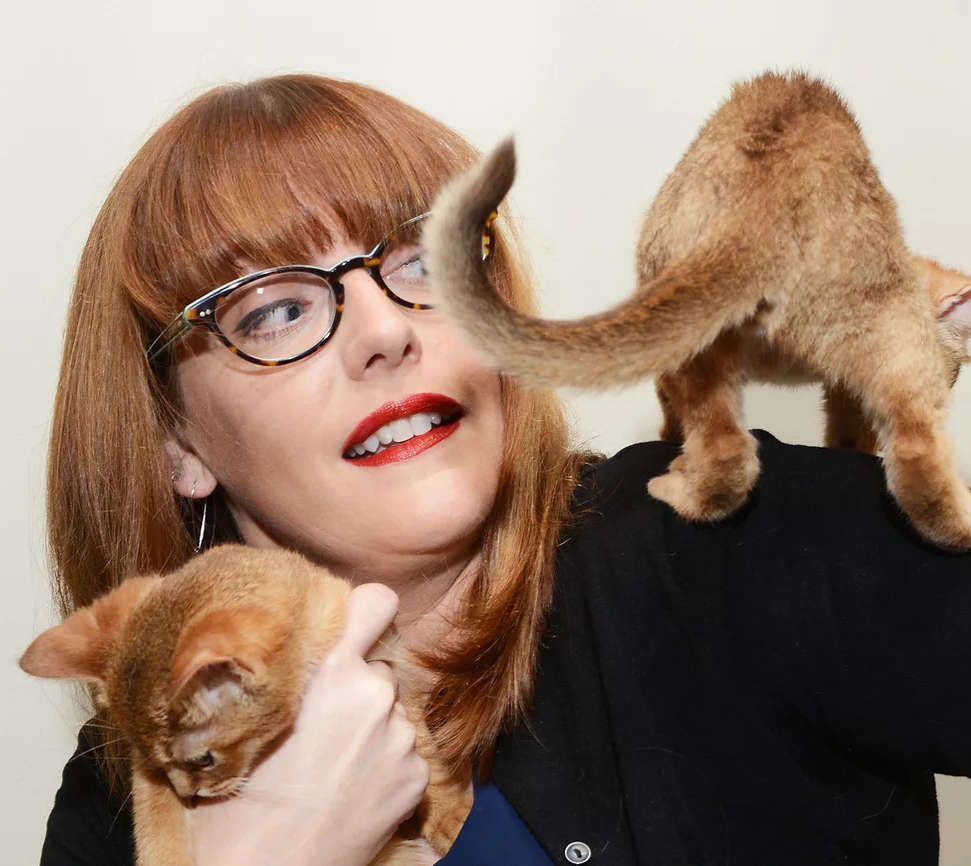Children learn that cat cows go,” moo,” dogs go “woof,” and cats go meow.” Those aren’t the extent of every sound an animal can make. It’s an oversimplification to help children learn.
Cats have a wide array of different sounds: chirp, trill, purring, and more. While meowing and purring are the most common noises cats make, the others are just as important. Learning about your cat’s noises can help you learn to understand what they want or need.
What does it mean when cats chirp or trill?

The first important step in understanding why your cat may chirp, trill, or more is knowing the definition of these sounds. How to distinguish them.
A chirp is also known as a chirrup or trill. This is a short, peep-like sound similar to a songbird’s warble. International Cat Care clarifies these can be:
- Murmuring sounds are formed with the mouth closed. These are generally used for greeting, attention, acknowledgement, and approval.
- Meowing sounds are used to communicate friendly interactions with other cats, but the message can vary.
- Aggressive sounds are formed with the mouth opened and are associated with various forms of aggression.
The next step in understanding your cat is knowing why they may be chirping. Our Certified Cat Behaviorist, Katenna Jones (ACAAB) is here to help.
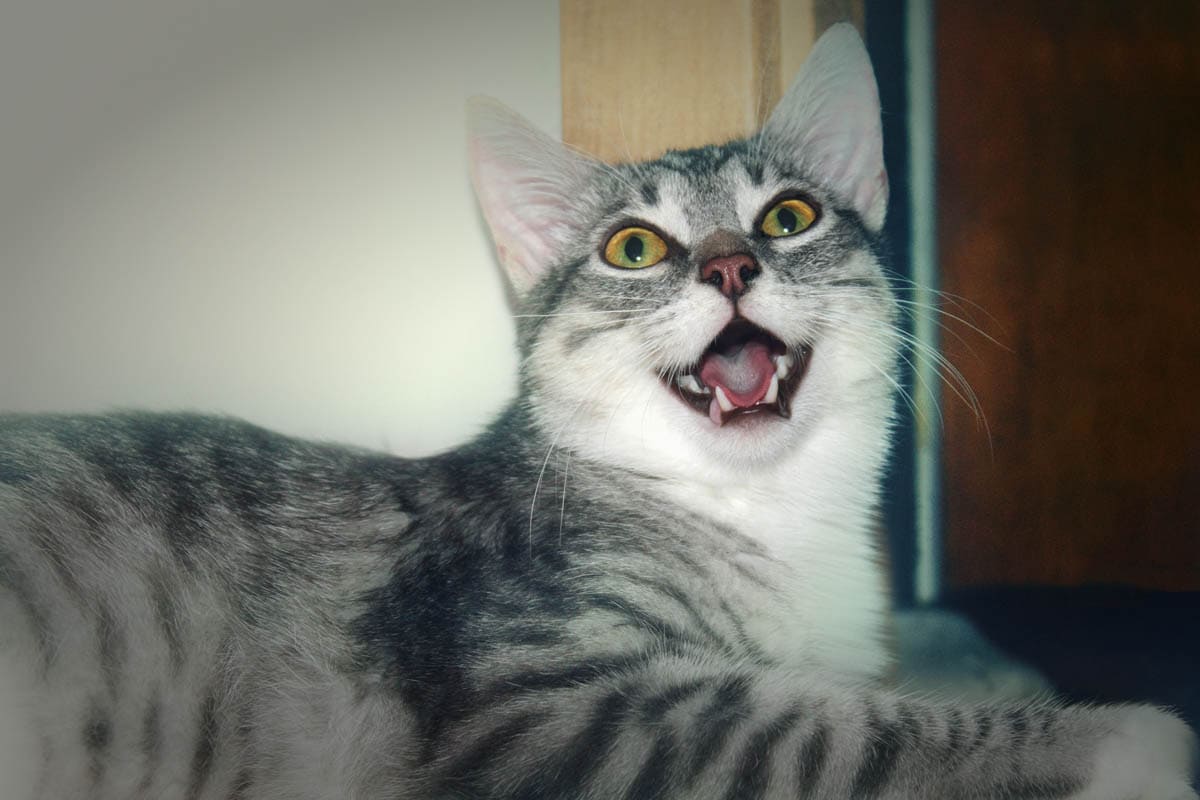
1. Saying hi
The primary reason your cat might trill or chirp is to communicate hello to you. When you come home after a long day, your cat may run up and start rubbing themselves over your legs. Or the “cat activation noise,” where the cat trills upon waking. Katenna Jones comments, “There’s no need to do anything, as these are happy sounds. However, you might praise or pet them!”
2. Social communication
According to a study on feline vocal communication conducted by Chloe Tavernier and Sohail Ahmed, chirping can be used as a contact call to locate something specific or communicate when something is desired. A female may chirp when approaching her nest.
3. “oh, you are here?”
As much as we wish cats could speak, they can’t. However, they use their voice to communicate with us. Katenna explains, “Your cat’s chirp, trill, or chirrup is likely directed at a human, another cat, or another species, but it would likely be an individual that the chirper feels comfortable with and isn’t startled when that individual approaches. You might think of it as, “Oh, hey, I didn’t realize you were there, but you didn’t startle me. Greetings!”
4. Asking you to follow them
Felines may communicate their confusion, but it’s pretty obvious when a cat wants you to follow them. They’ll twirl in a circle, some screaming and some trilling. This sound can signify your cat wants you to follow them. Maybe they want a treat… Or their litter box cleaned!
Body language can help you understand your cat’s chirps, trills, meows, or yowls
If your cat chirps, you’ll probably want to know the reason. The range of cat trill is large, meaning you have to use other cues to narrow it down. Context is a significant indicator of the meaning, but the biggest clue our cats give us is body language.
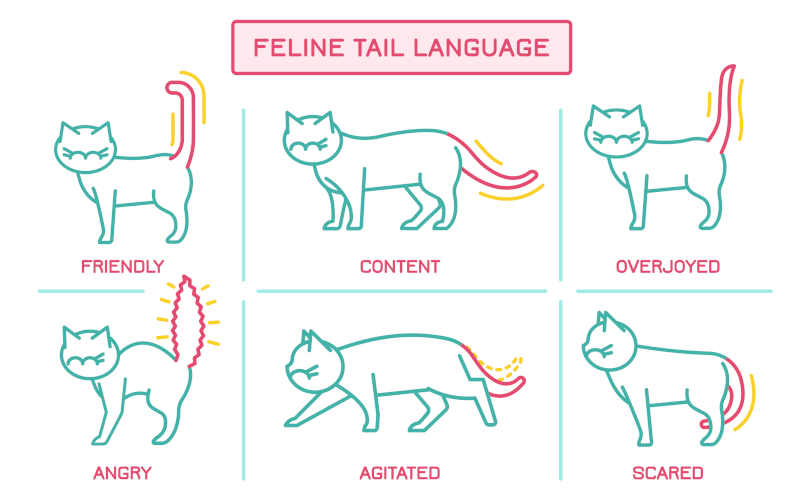
Saying hi
Happy cats will say hello to you. If they are standing, their ears are in a natural position with the tail upright, curved slightly. The eyes are normal shaped with a closed mouth. If they lie down, their bodies may be stretched out with the belly exposed. If they are sitting, the tail is held out loosely from the body.
Social communication, huh, and asking you to follow them
It’s harder to pin down the body language of these trill reasons because cats can have many emotions associated with these. Cats can have happy body language when trilling for these reasons.
Cats can be worried when trilling. A worried cat is in a crouched position with tense muscles. The tail is tucked tightly toward the body, with the ears swiveled sideways. The pupils may be dilated. Worried cats may hide.
An unhappy or angry cat can trill. The body is flattened with dilated pupils if a cat is lying down. The ears are flat to the head, and the tail is tight to the body. If standing, the back may be arched with hair raised. Their posture is tense, with one paw off the ground, ready to swipe. The mouth is open, with teeth showing.
Why do some cats trill and others don’t?
It all comes down to purrsonality. Researchers from Natusan determined five common dominant personality types: nervous, outgoing, bossy, spontaneous, and agreeable.
Just like humans, cats can be either introverted or extroverted. This can be influenced by genetics, relationship with humans, environment, and raising. In general, more outgoing cats are more likely to trill. Shyer cats are less likely to trill because they don’t express their emotions as easily.
Can you help your cats make happy sounds more often?

Trills are a compliment! Your cat is happy and comfortable in your home. If you’re concerned and want to ensure your furry friend’s happiness, there are a few ways to help make shy cats more comfortable.
- Environment: The biggest factor in your cat’s comfort is their environment. No one is comfortable in a tense or scary home. We want our felines to be comfortable in their home. You can do this by providing a safe, stable environment. Additionally, you can provide lots of hiding places for your cat to enjoy. Cats love exploring, so they offer a wide variety of toys and cat towers.
- Scent: Scent is the cat’s primary sense. Their sense of smell is 9 to 16 times as strong as humans. This is why you must ensure your home is pleasant for your cat’s nose. If the house stinks, the cat won’t be comfortable. Additionally, your cat likes the home to smell familiar, so they will use the litter box immediately after cleaning.
- Trust: It takes time to build trust with a cat. Imagine moving from a foster home to a shelter to their “permanent” home, only they don’t know it’s permanent. Not yet. It can take several weeks for your cat to adapt to a new place and learn how to trust you. Give it time.
- Pace: While it’s tempting to want to play with our cats immediately, we should let them set the pace. Each cat’s needs are unique, so let them dictate how fast or slow you get used to each other.
Do cats try to mimic birds when chirping?
While it may sound like a cat mimics birds while chirping, they are not. Cats chirp when excited. Additionally, you may hear a chattering, which cats make when watching prey because they are excited. A chattering cat is theorized to be them mimicking the bite to the back of the neck they would perform to kill a bird.
What breeds chirp the most?
Some cats frequently speak, while others rarely do. The noises a cat makes are significantly influenced by their genetics. Specific breeds of cats are more prone to “screaming” or “talking.”
These “chatty” breeds can be the bane or brightness of your existence. If they’re screaming at 3 am, not so great. But being greeted by your favorite friend when you get home from work is fantastic.

Siamese: The personality of these cats is affectionate, trainable, intelligent, and very vocal. These cats crave constant interaction and are not scared to seek it by using their voice.

Bengal: These exotic beauties are muscular with plenty of energy. They can learn tricks and love to communicate by meowing, chirping, and purring.
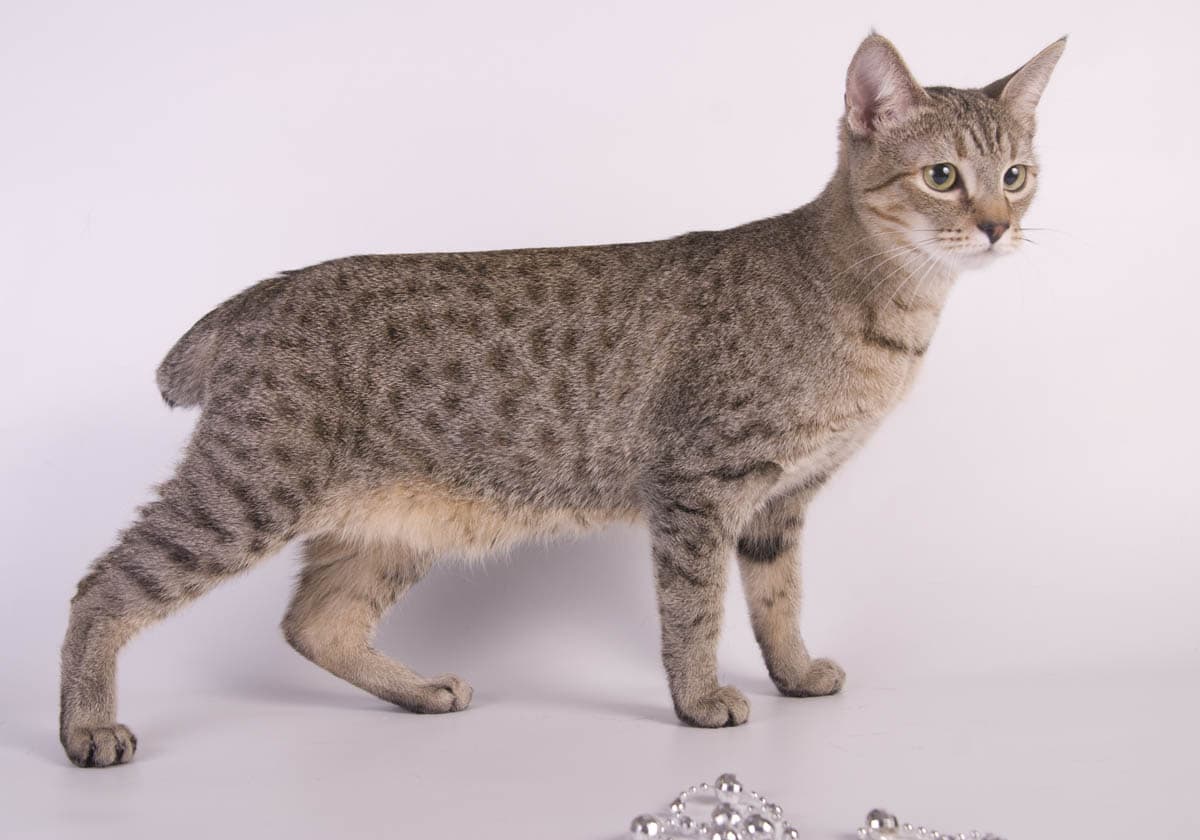
American Bobtail: Don’t worry, nothing is wrong with these folks! Their short tail doesn’t affect their calm personality. These get along well with children and others but are vocal in their unique way. They mostly like to purr and meow but will trip when expressing happiness.
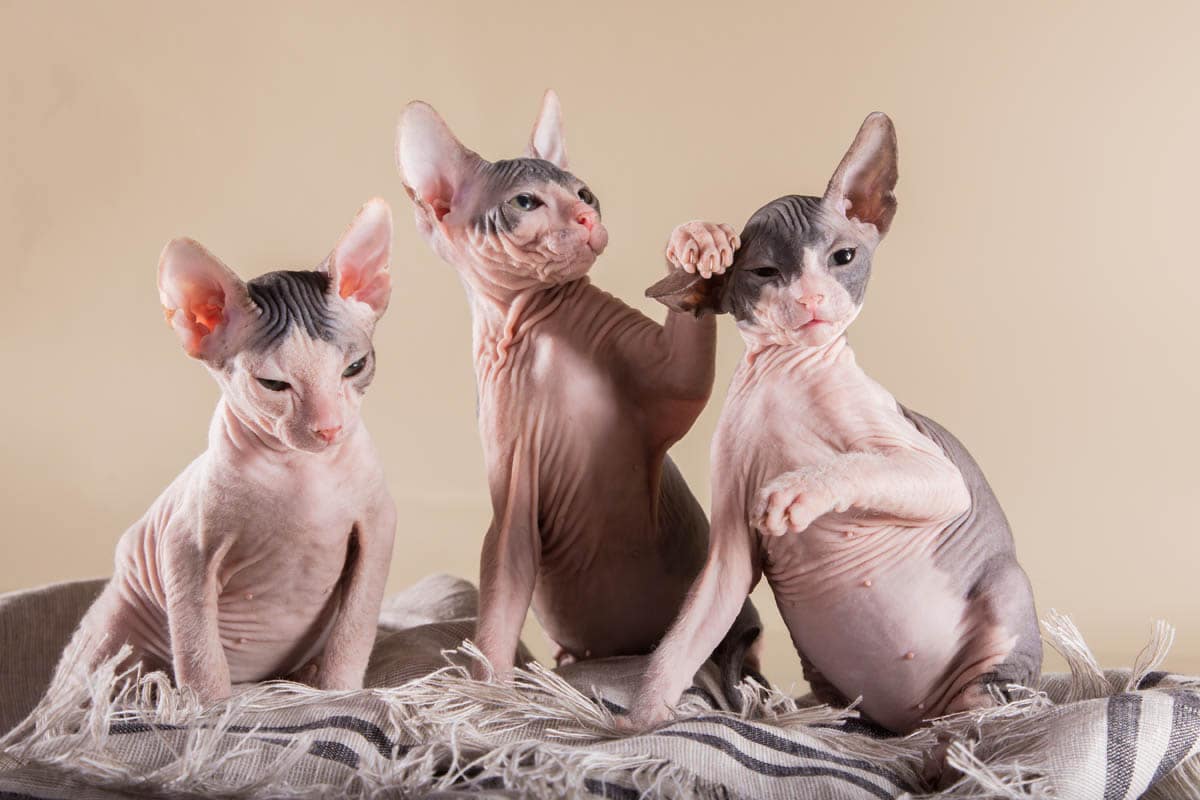
Sphynx: The bald babies are definitely unique looking! However, under the surface, they are highly energetic and mischievous. They have a sense of humor. Their voices tend to be hoarse or raspy (maybe because they use it so much!).
FAQ
Why does my cat chirp when I pet her?
Trilling or chirping is used by adult cats to signify happiness or affection. If your cat trills while being pet, it means they love it. It’s a great thing!
Why would a kitten make a chirping sound?
Kittens chirp for the same reasons adult cats do–mostly because they are happy! This noise can be a little off-putting upon first hearing it, but rest assured, it’s a good experience.
Why is my cat chirping non-stop?
If your cat is a female and unspayed, she is more likely to trill due to her hormones as she wishes for a mate.
